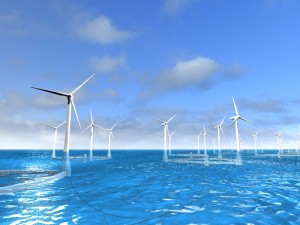Offshore wind power Researchers' keyword commentaries

Some countries have begun constructing large-scale offshore wind farms with ambitious targets, because offshore winds are strong and less turbulence, and there is an extensive space for the construction of wind farms on the sea, where there will be few environmental problems related to landscape and noise. The installed capacity of offshore wind power reached 5.42 GW in the world in 2012, showing an annual growth rate of 31%. The world’s largest offshore wind farm completed in 2012has a capacity of 630MW, almost the same as a nuclear power plant. In Japan, fifteen 2MW wind turbines were installed offshore near Kamisu City, Ibaraki Prefecture early in 2013 to produce electricity to supply around 15,000 households.
According to a survey conducted by the University of Tokyo in 2006, the theoretical wind potential available in Kanto coastal region is almost same as the annual power production by the Tokyo Electric Power Company in 2005, and this implies that large offshore wind farms can be constructed in the Pacific coastal region where wind conditions are good. Japan’s coastal waters are deep in comparison with Europe, and it is therefore necessary to use floating support structures in these areas. The University organized a joint research project on floating wind turbine systems with electric power companies, wind turbine and ship manufacturers and construction companies in Japan to propose semisubmersible, SPAR and TLP floaters and to promote a national R&D project for the practical use of these structures. Figure 1 shows the architectural rendering of a floating offshore wind farm.
Wind energy is resource without CO2 emission and can be obtained domestically, which differs from uranium and fossil fuels imported from overseas. Wind energy has also an advantage in cost and could have a significant effect on industry promotion and job creation (about 15,000 jobs/GW). As of the end of 2012, the installed capacity of wind turbines around the world totals 282.59 GW and investments in wind energy industry account for one-fifth of all investments for the electrical equipments. The wind power market is now more than eight trillion yen. The cost of wind power is a little higher than that of thermal power. However, fossil fuels for the thermal power accounts for 60% of the electrical production costs, while almost 100% of the money for wind power will be used at home because Japan has whole technologies. It is believed that the full-scale penetration of wind power in Japan will contribute to solving power shortage problems and significantly help Tohoku area to recover from the disaster by the Great East Japan Earthquake.
Professor Takeshi Ishihara
Graduate School of Engineering
Department of Civil Engineering, Graduate School of Engineering
(This article first appeared in the tenth issue of Tansei.)








